Tyrannosaurs bit each other's faces in dino fight clubs
These brawls left nasty scars.
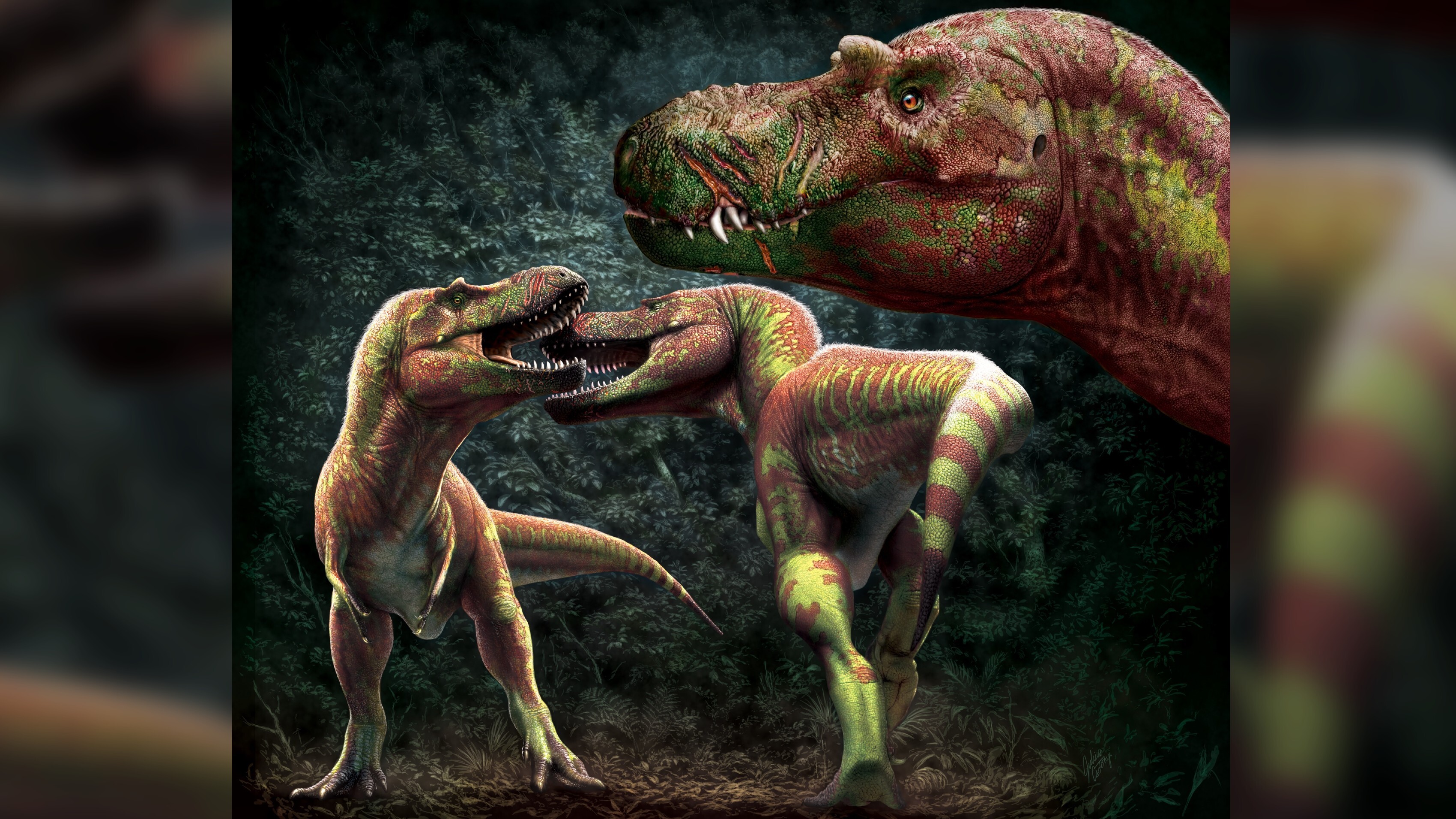
Tyrannosaurs viciously bit each other on the face, though likely not with the intention to kill. Rather, these biting brawls were probably the result of different individuals' competing for prizes, such as territory, mates or higher status, a new study finds.
Researchers made the discovery after analyzing 202 tyrannosaur skulls and jaws that had a total of 324 scars. Almost immediately, the team realized that young tyrannosaurs didn't have bite marks on their faces. Instead, about half of the older tyrannosaurs had them, indicating that perhaps only older members of one sex partook in these fights.
"Taken together, we can piece together how these animals were fighting," study lead researcher Caleb Brown, a curator at the Royal Tyrrell Museum in Alberta, Canada, told Live Science in an email. "They were likely posturing and sizing each other up, then trying to grab each other's heads between their jaws."
Related: Gory guts: Photos of a T. rex autopsy
Tyrannosaurs were a group of meat-eating dinosaurs that dominated as predators in Asia and North America during the last 20 million years of the Cretaceous period (145 million to 66 million years ago). The project began with the discovery of a single tyrannosaur specimen: an upper jawbone unearthed in Alberta's Dinosaur Provincial Park in 2017. An analysis of the jaw revealed that it had a series of long "scars that arced across the side of the bone," Brown said. "These were likely tooth marks from another tyrannosaur that had healed, forming these raised ridges."
Tyrannosaur skulls often bear many scars. But no one had looked at a large number of these scars to examine them systematically. So, Brown and his colleagues began documenting the occurrence, shape and other details about these scars on tyrannosaur skulls, including on Albertosaurus, Daspletosaurus and Gorgosaurus.
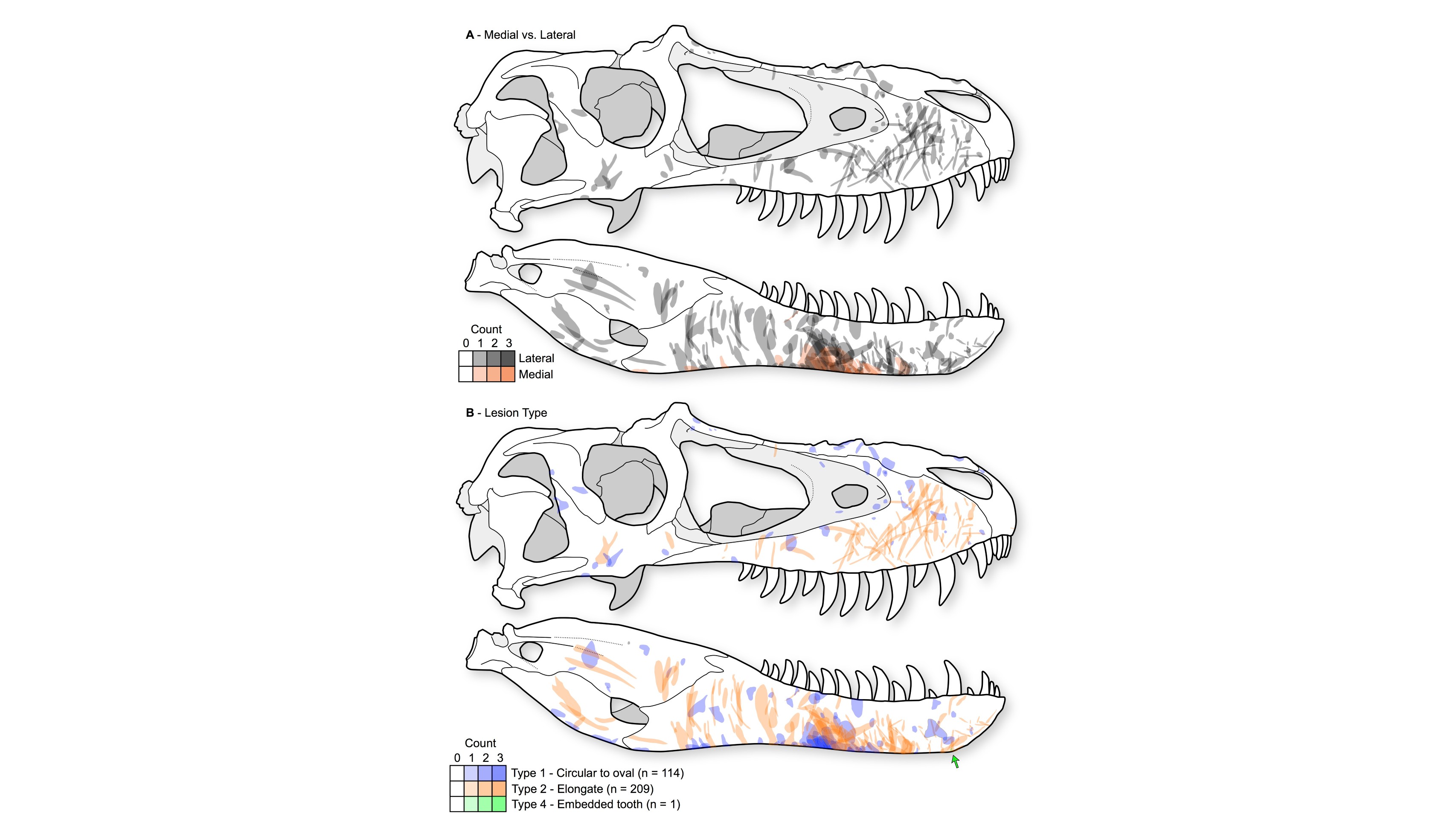
Facial scars were very common, the team found. Bite marks were present in about 50% of large (but not yet mature) tyrannosaurs and about 60% of adult-size tyrannosaurs. Moreover, the scars tended to appear on the upper and lower jawbones, and included tooth puncture marks and elongated scars.
Sign up for the Live Science daily newsletter now
Get the world’s most fascinating discoveries delivered straight to your inbox.
The team determined how big the "victims" and the "biters" were by comparing the spacing between their teeth, according to the skulls and the bite marks on them. "The animals were generally of similar size," meaning it wasn't a David-versus-Goliath situation, Brown said.
These data suggest that tyrannosaurs "didn't do this behavior when they were young, and only started when they were about half grown, and only did it with animals of around the same size," Brown said. Moreover, the prevalence of these nasty, but generally nonlethal scars suggests that older tyrannosaurs were fighting each other on a regular basis, he said.
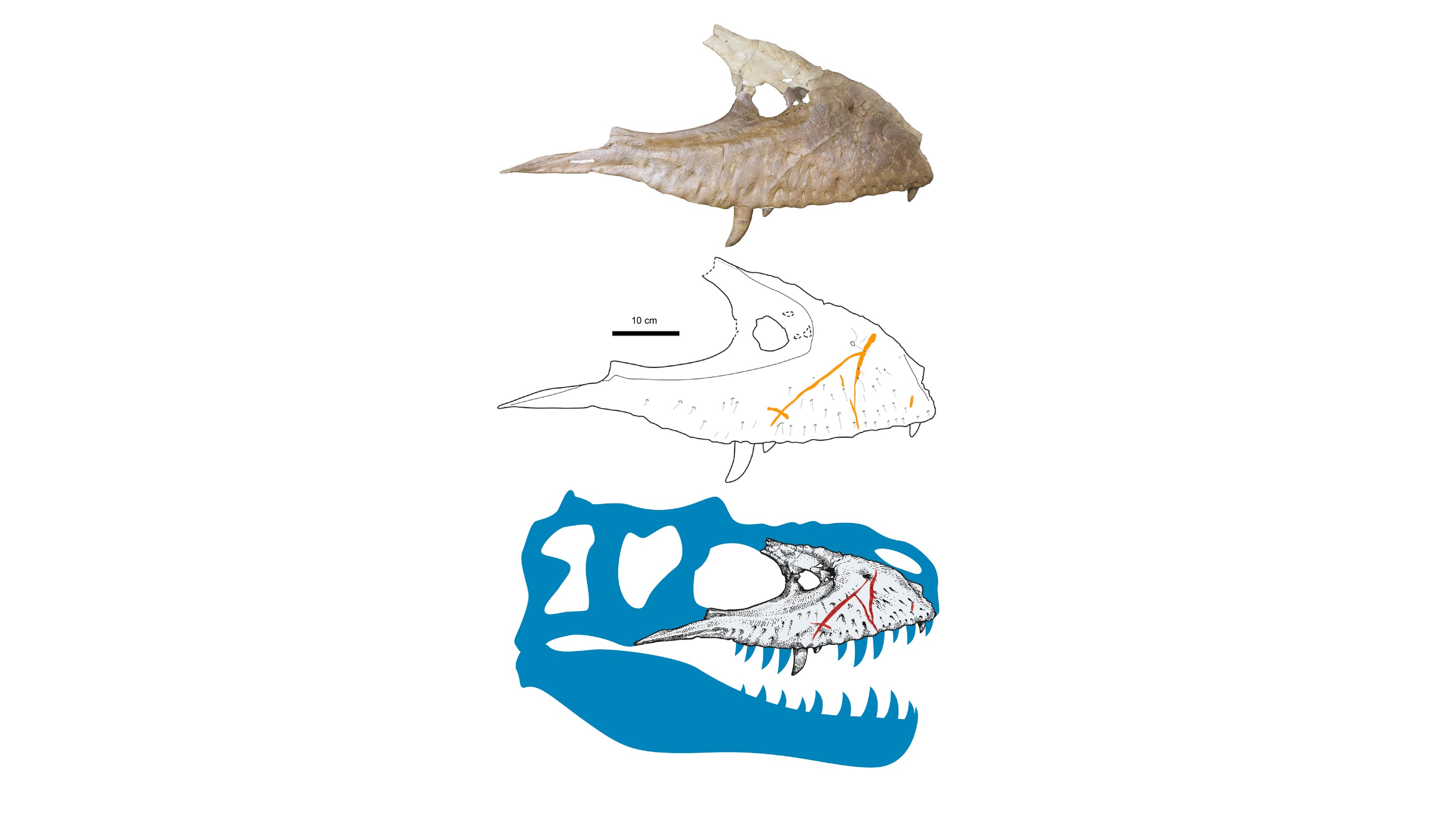
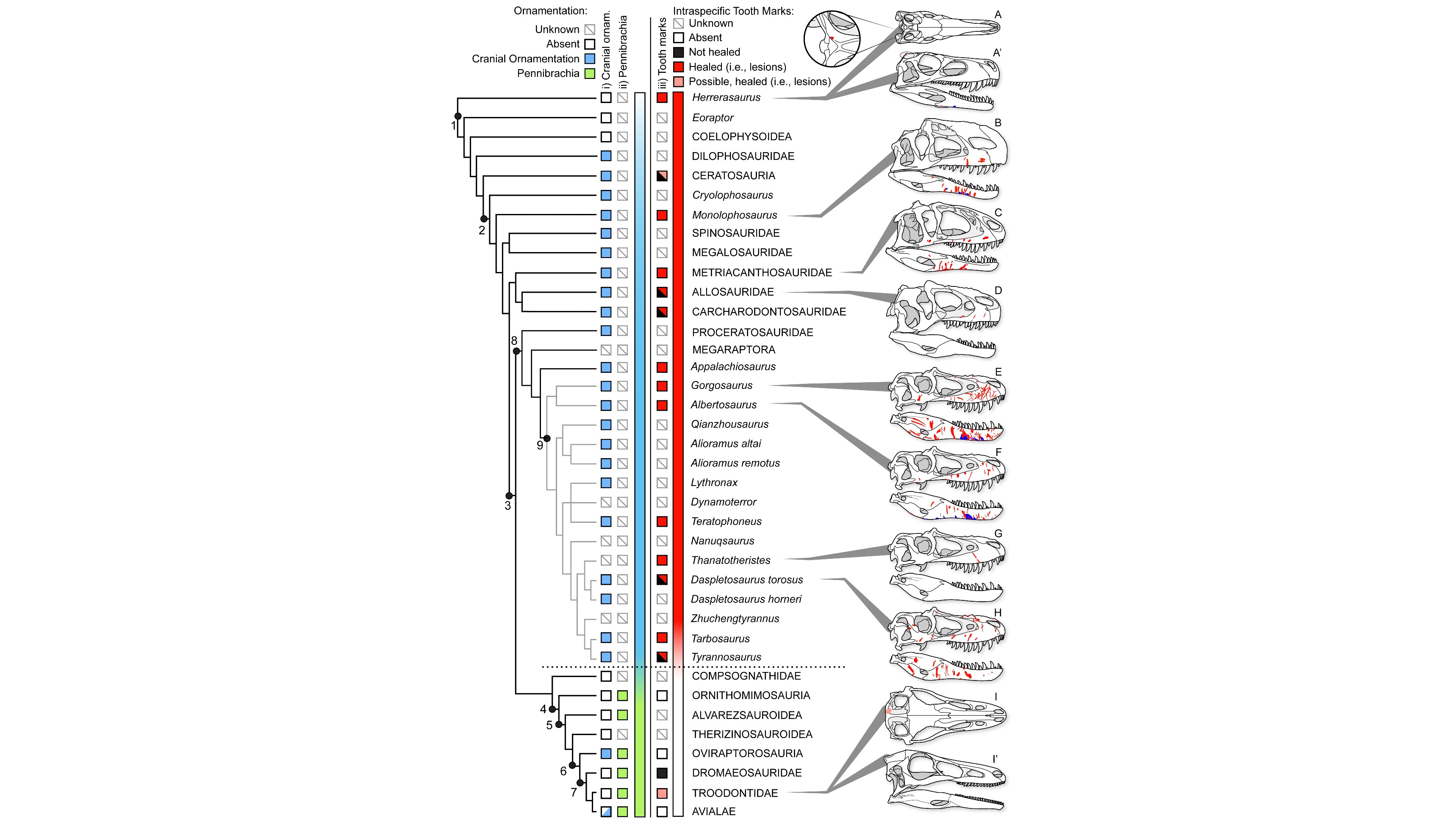
Modern animals fight their own kind too, often once they're sexually mature. "These animals are old enough to reproduce and are testing the waters to see how they rank compared to rivals or how they rate compared to potential mates," Brown said. Tyrannosaurs may have also begun fighting each other around sexual maturity, "but this is really hard to test, so we don't actually know," he added.
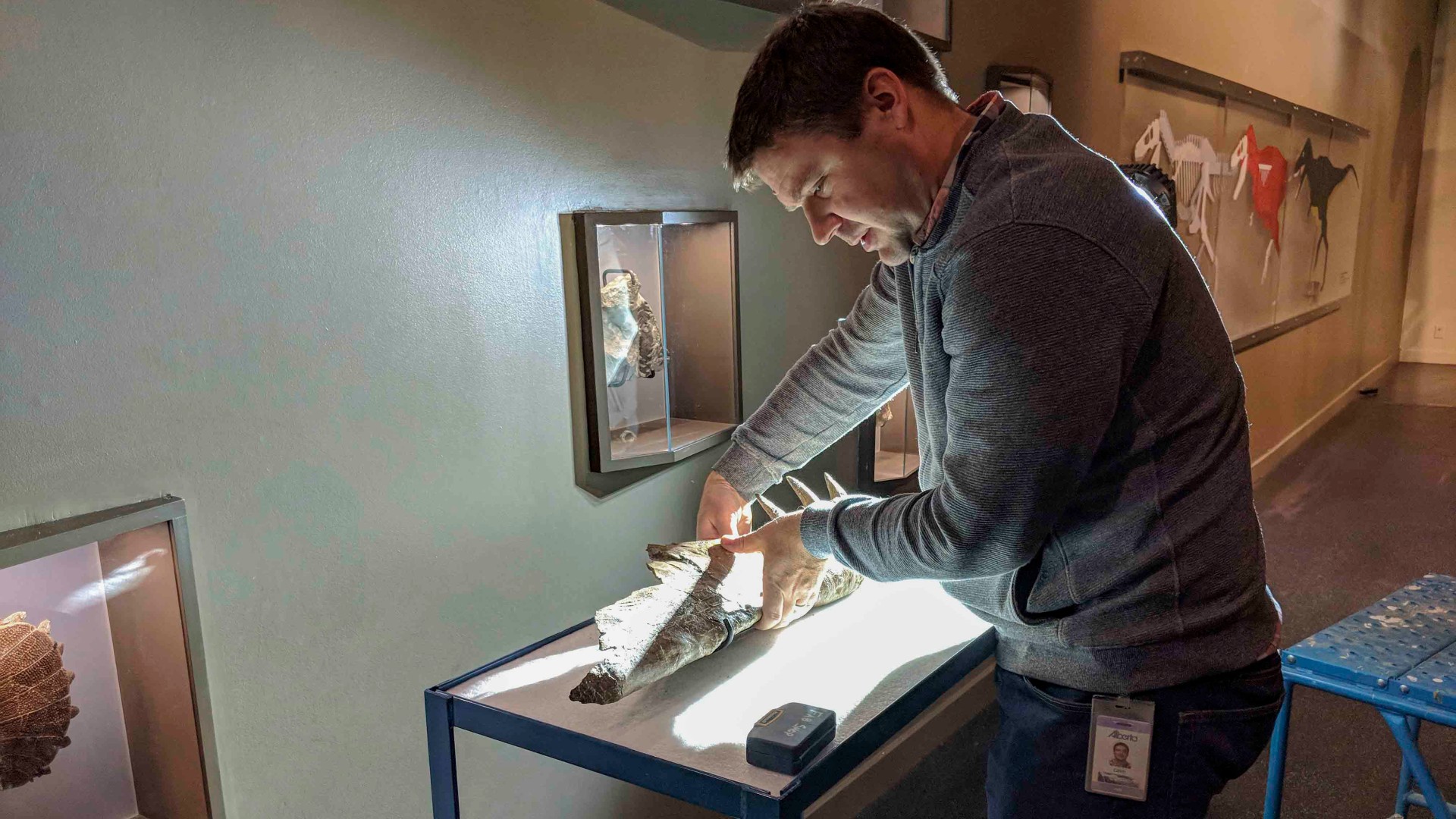
It's nearly impossible to determine a dinosaur's sex. Unless a dinosaur died while it was pregnant or laying an egg, scientists can't tell females from males.
"We also don't know if [the biting behavior] was only males, only females or both that were doing the fighting, but it is interesting to consider the possible scenarios, especially if we get better at determining dinosaur sexes in the future," Brown said.
The study was published online Sept. 6 in the journal Paleobiology.
Originally published on Live Science.

Laura is the archaeology and Life's Little Mysteries editor at Live Science. She also reports on general science, including paleontology. Her work has appeared in The New York Times, Scholastic, Popular Science and Spectrum, a site on autism research. She has won multiple awards from the Society of Professional Journalists and the Washington Newspaper Publishers Association for her reporting at a weekly newspaper near Seattle. Laura holds a bachelor's degree in English literature and psychology from Washington University in St. Louis and a master's degree in science writing from NYU.










